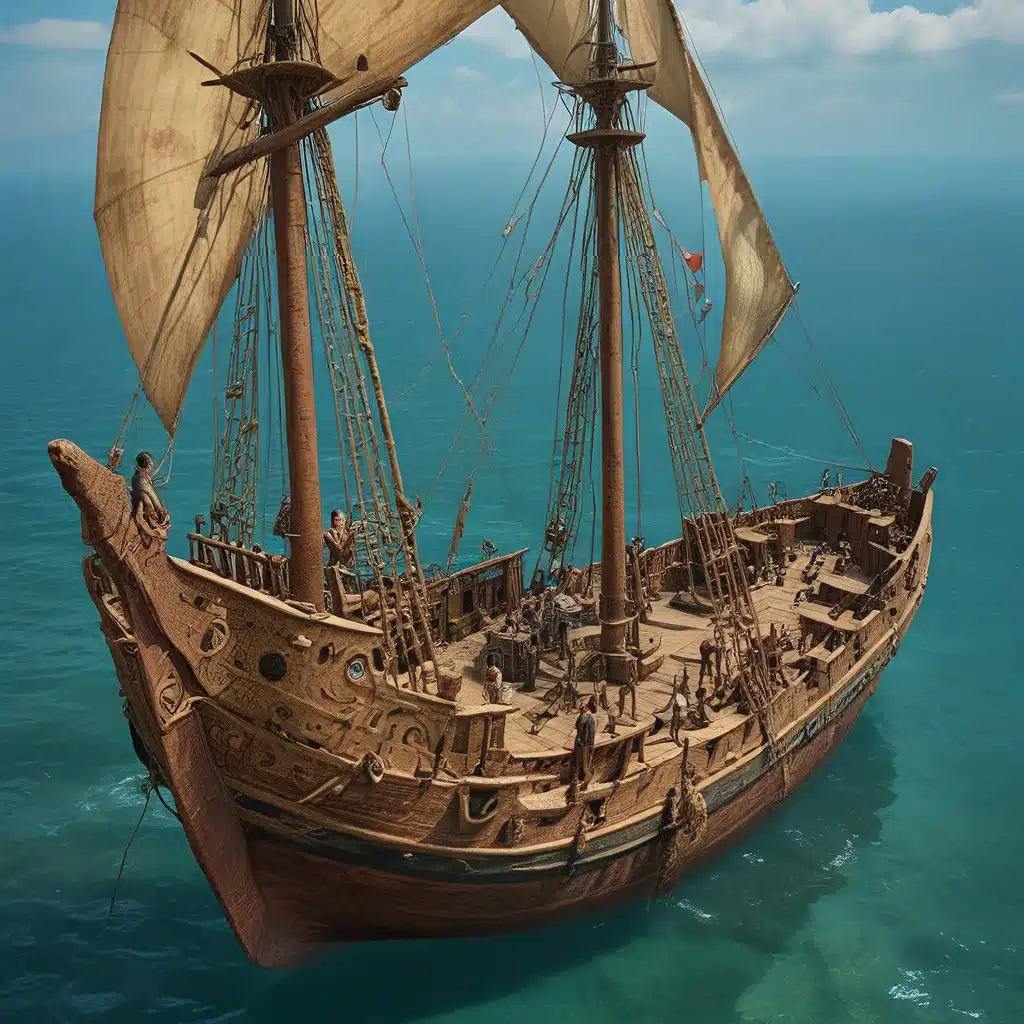
In the vast expanse of the world’s oceans, the mysteries of ancient maritime exploration and trade have long captivated the imagination of scholars and adventurers alike. From the Phoenician seafarers who traded along the Mediterranean coast to the Polynesian voyagers who traversed the vast Pacific, the intrepid mariners of the past have left behind a wealth of clues that continue to shape our understanding of the ancient world.
Unlocking the Mysteries of Submerged Civilizations
One of the most exciting frontiers in the study of ancient maritime history is the exploration of submerged landscapes and shipwrecks. As sea levels have risen and fallen over the millennia, countless coastal settlements, trade routes, and even entire civilizations have been swallowed by the ocean. These submerged landscapes offer a unique window into the past, revealing insights into the way people lived, traded, and interacted with their environment.
Expeditions led by the NOAA Office of Ocean Exploration and Research have uncovered a wealth of archaeological treasures, from the remains of ancient shipwrecks to the remnants of long-lost coastal communities. In the Gulf of Mexico, for example, scientists have discovered evidence of late Pleistocene landscapes, complete with the remains of mastodon and other megafauna, providing clues about the earliest human settlements in the region.
Similarly, the Bering Strait between North America and Asia has long been a focal point of exploration, as it is believed to have been a critical migration route for the first humans to arrive in the Americas. Expeditions in this region have uncovered a wealth of submerged cultural heritage, including the remains of ancient settlements and trade routes that shed light on the complex relationships and interactions between the indigenous peoples of both continents.
Revealing the Secrets of Ancient Trade Networks
The study of ancient maritime trade networks is another area of intense interest for researchers. Phoenician, Greek, and Roman traders, for example, established extensive trade routes that spanned the Mediterranean and even reached as far as the British Isles and the Baltic Sea. The discovery of shipwrecks and submerged port facilities along these ancient trade routes has provided invaluable insights into the goods, technologies, and cultural exchanges that shaped the ancient world.
One particularly fascinating example is the wreck of the Trouvadore, a 19th-century slave ship that sank off the coast of the Turks and Caicos Islands. Expeditions to the wrecksite have uncovered artifacts and remains that shed light on the brutal realities of the transatlantic slave trade, as well as the resilience and ingenuity of the enslaved people who sought to resist their captors.
Similarly, the exploration of ancient East Asian maritime trade networks has revealed the cultural and technological sophistication of civilizations like the Khmer Empire and the Srivijaya Kingdom. Archaeologists have discovered the remains of vast trading networks, complete with intricate systems of ports, shipbuilding techniques, and navigational strategies, that connected the diverse cultures and economies of the region.
Unraveling the Mysteries of Ancient Seafaring
Beyond the study of ancient trade networks, the exploration of ancient seafaring technology and navigation has also yielded fascinating insights. From the Polynesian voyagers who traversed the Pacific Ocean using intricate celestial navigation techniques to the Viking explorers who ventured across the North Atlantic, the ingenuity and skill of these ancient mariners continue to captivate researchers.
Expeditions to the wreck of the RMS Titanic, for example, have provided valuable information about the technological and engineering advancements of the early 20th century, while the exploration of Roman shipwrecks has shed light on the sophisticated construction and design of ancient vessels.
Moreover, the study of ancient maritime technologies has also revealed the profound environmental and ecological knowledge that these seafarers possessed. The Polynesian voyagers, for instance, were intimately familiar with the complex currents, winds, and marine life of the Pacific, allowing them to navigate vast distances with remarkable precision.
Uncovering the Significance of Ancient Maritime Exploration
The ongoing exploration and study of ancient maritime history have far-reaching implications for our understanding of the past. By uncovering the secrets of long-lost civilizations, trade networks, and seafaring technologies, researchers are able to piece together a more complete and nuanced picture of the ancient world.
These discoveries not only challenge our traditional narratives of history but also provide valuable insights into the cultural, technological, and environmental factors that shaped the course of human development. As we continue to uncover the mysteries of the deep, we gain a deeper appreciation for the remarkable ingenuity and resilience of our ancestors, and the enduring bonds that connect us to the vast expanse of the world’s oceans.
At The Lost Kingdoms, we are committed to exploring and sharing the fascinating stories of ancient maritime exploration and trade, inspiring wonder and curiosity in our readers. Through our in-depth analyses, engaging narratives, and thoughtful perspectives, we aim to shed light on the rich and complex tapestry of human history, one discovery at a time.


